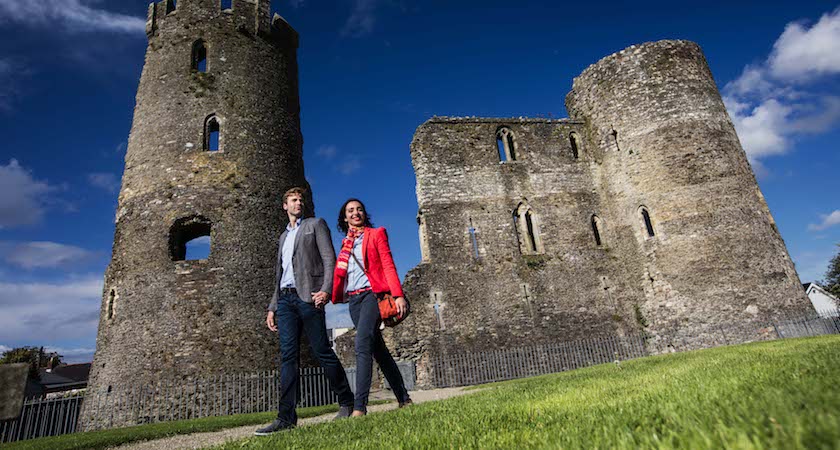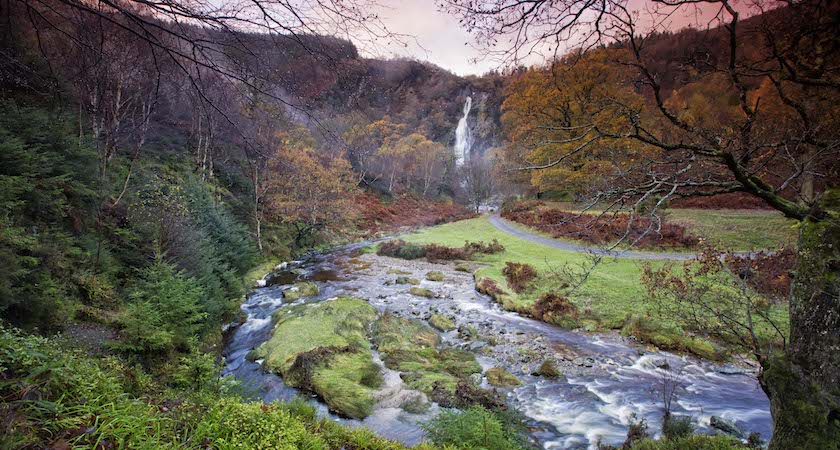Brought to you by Tourism Ireland
THIS time-worn land has seen Neolithic farmers clear the land, saints and scholars found great learning monasteries, rebel fugitives hiding in its woods, and muscular armies massing on plains ready for combat.
Epic tales, heroes and villains — and pubs where the craic is guaranteed — are all part of the story.
Castles are an integral part of Ireland’s Ancient East. Some you can visit, some you can stay in, and some you might want to approach cautiously – but if you’re looking for ghostly goings on and haunted castles, there’s no shortage around the island of Ireland.
They’re full of brooding mystery and bloody histories. Little wonder, then, that they come with many tales of tormented souls.
Most self-respecting Irish castles have at least one ghost, some two or three; but the 800-year-old Malahide Castle in Dublin has five, including Puck, a dwarf-like figure with a haggard face whose spectre was famously photographed on one occasion looking out through the ivy at the front of the castle.
The brooding edifice of Leap Castle in Co. Offaly is regarded as one of the most haunted places anywhere.
Today, some locals still don’t dare enter its grounds.
For further ghost-hunting, Leamaneh Castle in Co. Clare features (if you’re unlucky) the taunting cackles and screams of the husband- murdering Red Mary echoing from the walls.
At the other end of the spirit world, the story of Ireland’s saints and scholars is writ large throughout Ireland’s Ancient East.
High crosses, built by the monks to help their flock understand the intricacies of Christianity, are a unique part of the Irish countryside.
They were made of stone, not wood, so that marauders couldn’t burn them. Which brings us neatly to Ireland’s Viking story —the likes of Waterford and Wexford were first founded by these Norse warriors.
Round towers, hastily constructed in mediaeval times to withstand the attacks, are another unique aspect of Ireland’s landscape.
Ireland’s ancient east also takes in Ireland’s maritime story - times, tides and poignant farewells from quaysides all along the coast all feature.
The Sport of Kings, ergo horse-racing, is an integral part of Irish society, and today Ireland’s equine expertise reaches across the globe.
Everywhere are ancient stone remains, a ghostly extra dimension to the landscape. Every part of the Ireland’s Ancient east has its castles and forts - most of the visible ones are of Norman construction.
But these are modern, new-fangled structures compared with the complex Neolithic court graves, dolmens and ring forts, some dating back 5,000 years.
Places like Tara and Tlachtga are even older, going back to the time when the undead, accompanied by all manner of spirits, roamed the earth.
The culture, the music, and the heritage of Ireland’s Ancient East have all been shaped by centuries of thunderous happenings, as well as mythical ones.
This land of legends boasts Ireland’s oldest university, the 6th century Clonmacnoise monastery in Co. Offaly built overlooking a wide bend in the River Shannon.
No matter what your interests, you’re likely to find it here in the Ancient East — whether it’s hill-walking in the Slievebloom Mountains or the Cooleys, boating in the waters of the River Shannon, or spending a day at the races at Laytown, Co. Meath, Europe’s only first class race meeting held on a beach.
Ireland’s Ancient East is a place of turbulent history, ancient legends and myriad sporting activities. But today it’s a relaxing place with a wealth of attractions — both historic and contemporary.



